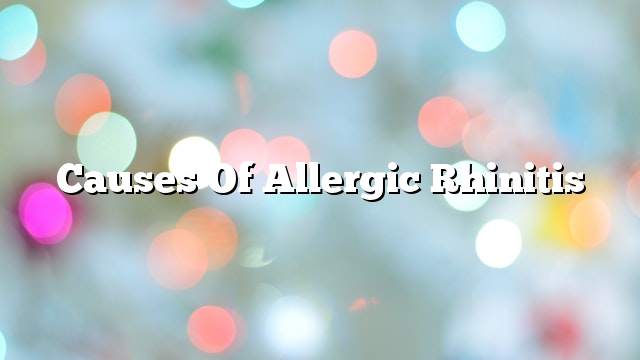Allergy to the nose
The sensitivity of the nose is caused by the sensitivity of the nose and eyes due to the inhalation of a substance that raises respiratory membranes such as allergies from breathing dust, or pollen, or the emergence of animals, and sensitization of the ashes of spring. When such things enter the respiratory tracts the body secretes chemicals, including histamine, Causing swelling and a desire to scratch with increased mucus secretion, the number of people facing this problem is relatively large, and once the body enters the immune system to fight and fight.
Causes of allergic rhinitis
- In order to be exposed to allergies, the body of the person must be susceptible to infection.
- Must be available elements that raise the sensitivity of the nose.
Once the two causes are available, the immune system produces antibodies that interact with the causation and bind to the walls of the nose, resulting in histamine secretion.
Symptoms associated with allergies
- Frequent sneezing.
- Exhalation of water secretions through the nose.
- Breathing difficulty.
- Redness in the eyes area and the descent of tears.
- Tingling in the throat area and ears.
- Loss of sense of smell.
- An inflammation of the throat.
Types of allergies
- Allergies occur seasonally.
- Frequent and persistent allergies.
The symptoms associated with both types are not different, but rather the difference in the seasonal causes. These are those that come in the spring and summer, while the permanent ones occur throughout the year as a result of dust and some fungi.
Treatment of allergic rhinitis
It can not be said that there is a drug to eliminate the sensitivity of the final, and the treatment is only to avoid exposure to the causes, and available medicines to reduce the severity of the symptoms, it should be noted that the disease is not allergic to serious diseases that plague life, and does not move from one person to another only The genetic factor is controlled, and the treatment can be summarized as follows:
- Keep away as far as possible from the causes that trigger nasal filaments.
- Drug therapy for allergic symptoms.
- Allergens can be avoided by:
- Closure of windows and doors in the spring season, where vaccine production is frequent, and avoid sitting in gardens and places where there are many plants and flowers.
- Stay away from nearby cats and dogs.
- With regard to the sensitivity caused by dust and the result of moth waste, which feeds on the remnants of the dead skin, it is difficult to eliminate them, but it can be reduced by:
- Use tissue to cover bedspreads and pillows that do not retain dust.
- Refrain from stuffing pillows with feathers or wool.
- Keep the house clean and floors.
- Frequent washing of pillows at least once a week.
- Removal of animals from the patient’s whereabouts.
- Keep clothing in a closed place.
